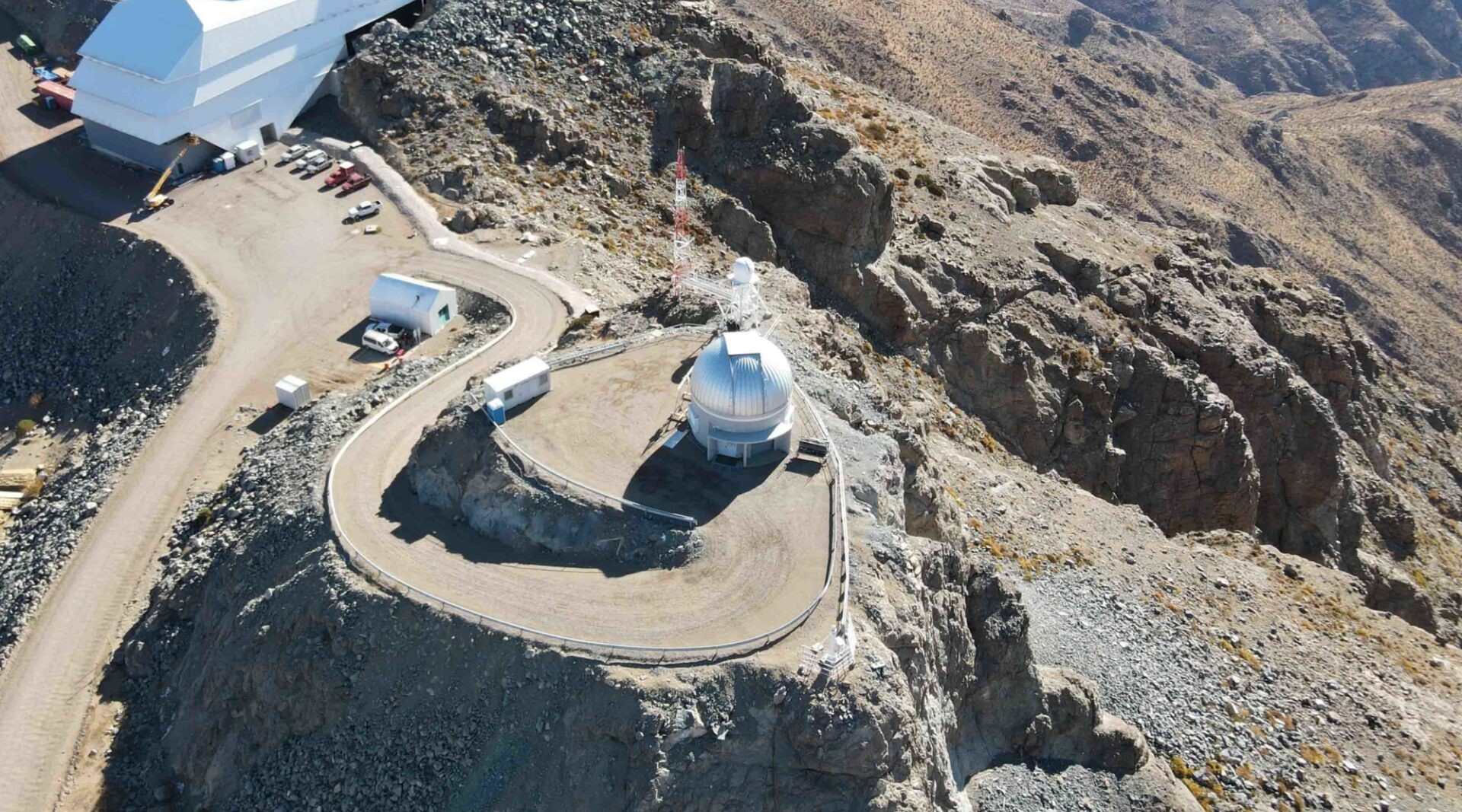Auxiliary Telescope
Highlights
- Rubin Observatory's Auxiliary Telescope (AuxTel) is comparatively small, but it's essential for making Rubin science the best it can be.
- The AuxTel was originally named Calypso, and it was located on Kitt Peak near Tucson, Arizona. After it was donated to the Rubin project by Edgar Smith, it was removed from Kitt Peak, refurbished at Rubin headquarters, and sent to Chile.
- The AuxTel works by repeatedly observing a small set of well-known, bright stars and measuring how their colors change when they pass through the atmosphere. Astronomers use these measurements to essentially "color-correct" images taken by Rubin Observatory.
Highlights |
|---|
|
Everybody needs friends to help them out, and the Rubin Observatory telescope is no different! Rubin Observatory's helpful friend is a second, smaller telescope near the main observatory called the Rubin Auxiliary Telescope (AuxTel for short), a 1.2-meter telescope that improves the accuracy of Rubin Observatory data by measuring a phenomenon called atmospheric transmission.
Atmospheric transmission refers to how directly light passes (transmits) through the Earth’s atmosphere in a given area, as opposed to being absorbed or scattered by the different molecules and particles in the air. Atmospheric elements that affect the transmission of light coming from space include molecules like water, oxygen, and ozone, as well as aerosols like sea salt, dust, ash from volcanoes, and smoke from forest fires. Light passes through the atmosphere and encounters these molecules and particles, which can absorb or scatter different colors of light in different ways---think about the red of a desert sunset, or the yellow-orange of a smoky wildfire sky. This means that the color of the light that reaches our eyes—or our telescopes—might not be the same as it was before the light reached Earth's atmosphere! To ensure Rubin Observatory's data is as accurate as it can be, we need to account for atmospheric transmission effects from everything present in the atmosphere above the observatory.
That’s where the Auxiliary Telescope comes in. In short, the AuxTel determines and records how all the those molecules and airborne particles in the atmosphere affect the light captured in Rubin Observatory images.
Each night, while Rubin Observatory surveys the sky, the AuxTel will repeatedly observe a small set of bright stars. Inside the AuxTel a device called a spectrograph separates the light from each of these stars into its component wavelengths (i.e., colors) and records the results. By comparing the information recorded by the AuxTel with information we already know about these sample stars, we can measure how the atmosphere above Rubin Observatory distorts the light from these stars and, by extension, all of the light collected by the telescope. Later, when Rubin data is processed, we can use these measurements to apply the appropriate corrections for distortions to the collected light caused by the atmosphere.
So while the AuxTel is a comparatively small telescope, it is essential for making Rubin Observatory data and science the best it can be!

